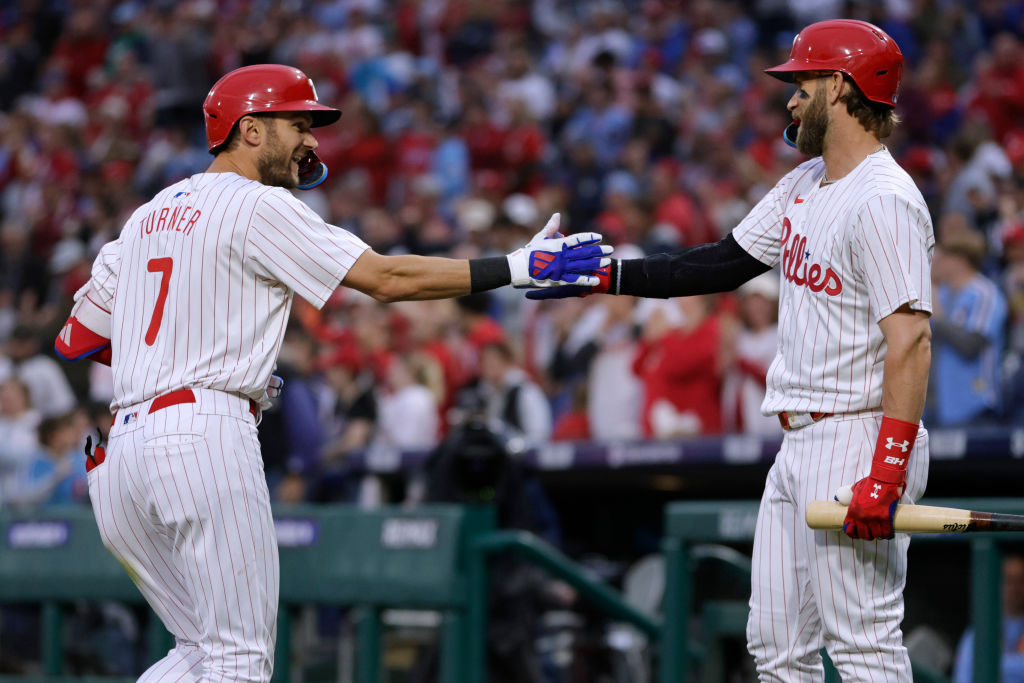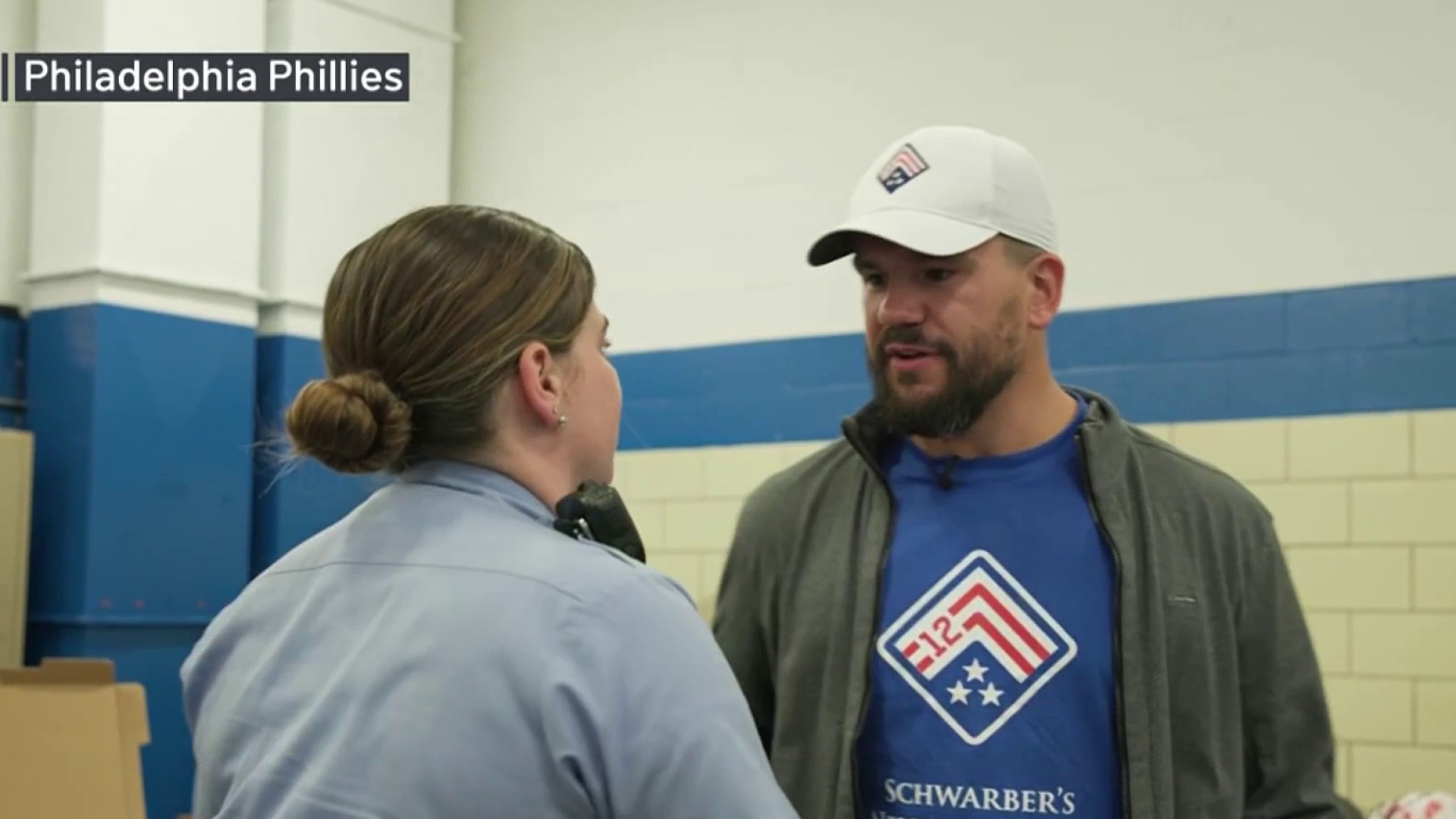The first half of the season was ... not kind to the Phillies. They lost two games for every one they won. They were brutal offensively in most of their 87 games. The starting pitching faltered early, the bullpen had a bad stretch, the baserunning was subpar.
But even a 29-58 team has its bright spots, which we'll focus on today. Several Phillies took legitimate steps forward these first few months. What was sustainable and what wasn't?
OF Aaron Altherr - New swing equaling consistency
Altherr heads into the All-Star break hitting .284/.356/.530 with 18 doubles, three triples, 14 homers and 44 RBIs. His .886 OPS ranks 24th in the National League. (It would have been 11th last season, but we're in the midst of a record-setting power season across the majors.)
Altherr had a higher OPS in the first half than some really good hitters: Jose Abreu, Edwin Encarnacion, Mookie Betts, Robinson Cano, Xander Bogaerts Justin Upton, Salvador Perez, Matt Carpenter, among many others.
Altherr's best stretch was from April 18 to May 14, when he hit .368 with seven doubles, seven homers and 20 RBIs in 21 games. But when that hot streak ended, it wasn't as if Altherr went into a shell. He remained consistent for the Phillies, never dipping below .274 or an .850 OPS.
This is what can happen when you make an actual change to your approach. It's not like Altherr was Domonic Brown in May 2013, getting a bunch of middle-in fastballs that he hit out to the same spot. Altherr shortened his swing over the offseason and is better able to handle velocity and breaking balls because of it.
Philadelphia Phillies
Complete coverage of the Fightin' Phils and their MLB rivals from NBC Sports Philadelphia.
"I don't see why not," manager Pete Mackanin said several weeks ago when asked if he thought Altherr could sustain a batting average between .280 and .290 during a full season.
If he can, he'll be a valuable player for years. Altherr has enough power to bat in the middle of the order, enough speed hit atop the lineup, and he can play all three outfield positions well.
The Phillies have Altherr under control for the next four seasons after this one. He isn't eligible for free agency until the 2021 season ends.
With how much payroll space the Phils possess, it wouldn't be surprising if they reward Altherr at some point over the next two years the way they did with Odubel Herrera last offseason. Altherr makes $538,500 this season and will be due a similar salary next year, his final pre-arbitration season.
RHP Aaron Nola - Better than ever?
From one Aaron to another: The Phillies saw the Nola they needed to see in the first half.
In 13 starts, Nola went 6-6 with a 3.59 ERA and 1.18 WHIP. He struck out 81 and walked 25 in 80⅓ innings.
The numbers don't blow you away, but it's the way Nola enters the break that gives the Phillies so much confidence in him moving forward. He allowed five runs in 29⅓ innings over his last four starts, pitching at least seven innings every time.
Over his last seven starts, he has a 2.61 ERA and .198 opponents' batting average.
The sick movement on Nola's two-seam fastball and curveball is back. Those two pitches give him the ability to freeze hitters from both sides of the plate, especially those who aren't familiar with him. Combine that movement with Nola's often excellent command low in the strike zone and you get a top-of-the-rotation arm. Maybe not an ace, but there's a ton of value in having a 24-year-old, inexpensive No. 2 starter.
The other promising development with Nola in the first half was an uptick in velocity. After averaging 90.3 mph with his fastball in 2015 and 2016, he's averaged 92.0 this year. That's yet another factor in his career-high 9.9 percent swing-and-miss rate.
Nola is toward the top of the National League in the following important categories:
• 2nd in pitches in the strike zone (50.2 percent)
• 6th in first-pitch strikes (65.7 percent)
• 10th-highest strikeout rate (24.6 percent of batters)
• 11th in groundball rate (49.3 percent)
He pounds the zone, he misses bats and he keeps the ball on the ground. Few expected Nola to rack up strikeouts but he has 270 in 269 innings in the majors after striking out 7.6 per nine in the minors.
In many ways, he's a pitching coach's dream.
Nola attributes the recent success to that high first-pitch strike rate and his realization that "sometimes low (in the zone) isn't low enough."
RHP Nick Pivetta - Major-league stuff
The Phillies enter the All-Star break feeling pretty confident that Nick Pivetta is a major-league starting pitcher.
That's something they were unsure about as recently as a month ago.
Over his last five starts, Pivetta has struck out 35 in 29⅔ innings and held his opponents to a .198 batting average. He was rocked in one of those starts at hitter-friendly Chase Field in Arizona, but here were the other four starts:
• 7 shutout innings, 9 strikeouts vs. Red Sox
• 6 innings, 3 runs, 10 strikeouts vs. Cardinals
• 7 innings, 1 hit, 1 run vs. Mets
• 7 innings, 3 runs, 9 strikeouts vs. Padres
Pivetta's combination of a mid-90s fastball and a tight, mid-80s slider has resulted in lots of swings-and-misses. That should continue.
The reason he has a 4.73 ERA is that he's allowed 12 homers in his 59 innings. Over his last four starts he's allowed 17 hits and seven were homers. He's able to get away with some mistakes over the plate because of his velocity, but some is different than all. He wants to attack and get ahead with his heater, which can result in a lot of outs but also a good deal of hard contact.
Look at Pivetta's last start as an example: He allowed three runs, all on solo homers, but retired 24 of the other 27 hitters he faced, nine via strikeout.
In terms of pure stuff, Pivetta is ahead of Ben Lively and Zach Eflin and obviously Jake Thompson and Mark Appel.
The fact that the Phillies, with no leverage, got a potential No. 3 or No. 4 starter for Jonathan Papelbon in 2015 is enjoyable in more ways than one. It rid them of the Papelbon headache, netted them an extra arm at the expense of the Nats, and ruined Washington's bullpen.
RHP Luis Garcia - Phils' patience paying off
OK, you know it's been a bad year when one of the five brightest spots is Luis Garcia.
But set aside those past perceptions of Garcia and focus solely on 2017 and there's been a lot to like. Garcia enters the All-Star break with a 2.55 ERA and 1.10 WHIP.
The major, major difference for him has been control. Garcia walked 81 batters in 127⅓ innings from 2013-16. Most relievers with control numbers that ugly don't remain in an organization, much less continue to get major-league opportunities. But the Phillies have always liked Garcia's stuff. He has a high-90s fastball that at times has ridiculous two-seam movement. Like, legitimately among the nastiest two-seam movement you'll see in the majors.
Garcia will likely slide into the setup role when Pat Neshek and Joaquin Benoit are traded and could enter next season as the setup man if his second half looks like his first.
Other positives from the first half:
• Freddy Galvis' Gold Glove defense
• Andrew Knapp's patience at the plate (20 walks, .355 OBP)
• Ben Lively's penchant for quick outs, even if there are questions whether his stuff will consistently work in the majors
• Tommy Joseph's pop - 15 HR, .779 OPS in Year 2 after hitting 21 HR with an .813 OPS as a rookie



